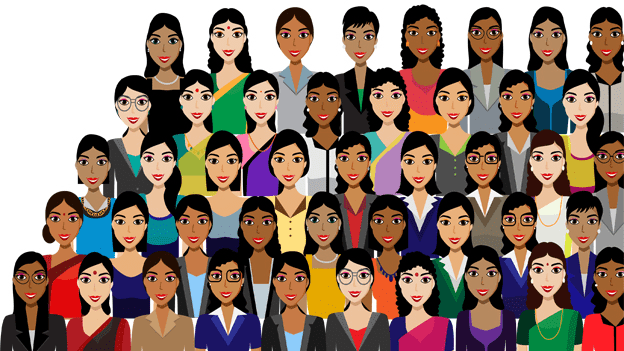Creating workplaces designed to empower women

Women are increasingly leading the way in India, be it in sports, politics, arts, corporate, or social sectors. The benefit of empowering women in the workplace can be impactful now and in the future. Research shows that company profits and share performance can be close to 50% higher when women are well-represented at the top levels of the organization. According to a report by the consultancy firm Grant Thornton, in India, 98% of companies have a woman as a part of senior management while the global average is 90%. Yet many women are often subject to gender discrimination, workplace bias, limited mentoring, deep routed sexism, and lopsided HR policies in the workplace.
The COVID-19 pandemic is impacting the professional and personal lives of just about everyone, but early evidence and reports highlight how it has impacted women more proportionally. According to the 10th edition of the LinkedIn Workforce Confidence Index, nearly 47 percent of working Indian women are experiencing more stress or anxiety due to the impacts of the COVID-19 pandemic. For men, this number stood at 38 percent, pointing towards a disproportionate impact on women in these challenging times. Such economic slowdowns not only unduly affect women but also prompt gender equality issues to slip down in priority on the corporate agendas. A McKinsey report pointed out that women’s jobs have been 1.8 times more vulnerable during the pandemic than men’s jobs. While reports say that the COVID-19 crisis has shown us the remarkable leadership capabilities of female leaders around the world, there is still a lot of work to do to ensure greater gender equity and pay parity among male and female employees across our country.
At an organizational level, here are a few ways in which one can empower and encourage women at their workplace:
Promote gender diversity
Organizations need to understand the impact of gender diversity and how teams with a ‘balanced’ gender mix perform significantly better on critical parameters like revenue and growth. By having a healthy gender ratio, an organization can attract a broader pool of talent, have multiple perspectives, and encourage greater collaboration. Hence, organizations need to put additional efforts into recruiting female workforce members across levels. With hybrid work models and an increase in demand for digital talent, many sectors are further looking at enhancing women's participation in the workforce. GoDaddy’s 2020 global diversity data shows that the total population of women at the company is 30%, as compared to globally, where women make up 19% of technical positions and 36% of non-technical roles. Other IT companies like Wipro, HCL Technologies, and Infosys are planning to hire more women candidates this year through campus placements. All these companies are focusing on creating opportunities for women and promoting gender diversity in the workforce. If organizations are not considering full-time women employees, they can consider hiring a diverse group of contract or gig workers to benefit from having women join in collaboration. A recent study states that alternative work arrangements in the gig economy have the potential to absorb more women and increase their participation in the workforce with some amount of reskilling.
Remove pay disparity
The pay gap persistently exists despite the efforts made to bridge it over the past few decades. It's estimated that women earn 20 percent less than men for the same work. Closing the gender wage gap is essential to help women achieve economic security. Organizations can combat this disparity by promoting transparency and allotting salaries based on market standards. And they also need to continually work towards minimizing unconscious bias across sectors, specifically in the areas of recruitment, performance reviews, and career advancement. While a Glassdoor study says gender pay parity won’t disappear entirely until 2070, many organizations have already taken steps to eliminate pay parity from the grass-roots level. One such example is GoDaddy, with it’s 2020 Diversity Report showing that in the technical ranks, women make one cent more on the dollar than men, and in non-technical roles, women make $1.00 for every $1.00 a man makes.
Prevention and elimination of violence and harassment
Despite its massive scale, violence and sexual harassment at the workplace remains under-reported because of fear of disbelief, blame, or social and professional retaliation. Apart from the psychological and emotional damage that harassment causes to victims, businesses suffer too. Many studies have found that experiencing harassment in the workplace often forces women to leave their jobs, taking away their ideas, connections, and potential growth along with them. It is almost like a brain drain for these organizations. Even as several companies have been on a work-from-home model since the start of the COVID-19 pandemic last year, sexual harassment cases still persist. According to the database of the National Commission of Women, 125 complaints of sexual harassment of women were received in 2021 so far. Organizations should demonstrate a zero-tolerance approach to harassment and must make clear that punishment for harassment applies equally across the organization, regardless of the designation of the employee. Remedial actions, in such cases, should also be known to all, which can aid in setting a benchmark for the organization. Strict anti-harassment policies and training on preventing sexual harassment should be made mandatory for all employees. Many organizations also implement channels through which employees can anonymously report cases of sexual harassment.
Special mentorship programs and policies
Establishing a gender-diverse workforce is imperative for organizations to perform at their highest stature, and mentoring can be the ideal approach to enable upskilling, building networks, increasing employee engagement and retention. Organizations should provide special mentorship programs for women as it enables them to set clear career ambitions, gain confidence and learn from each other personally as well as professionally. Many organizations have institutionalized training programs to help women who have been on a break for a certain period post-maternity, sabbatical, or a career break, transition back to work. Apart from special mentoring programs for women, organizations must also embrace the many lessons of flexible work learned through the pandemic. Policies like work from home, maternity leaves, child-care, and flexible working hours can all help to encourage women to enter the workforce and perform at a high level.
To help achieve a balanced and diverse culture at any organization, men should act as allies and get better at collaborating with women to help shrink gender disparities and engage as mentors, sponsors, and advocate for the fair treatment of women. Women provide a unique and impactful perspective which contributes to a more collaborative futuristic organization. Working women are here to stay, and organizations that chose to embrace these concepts to encourage women to join and excel in their organizations, can be setting themselves up for greater success in the future.














